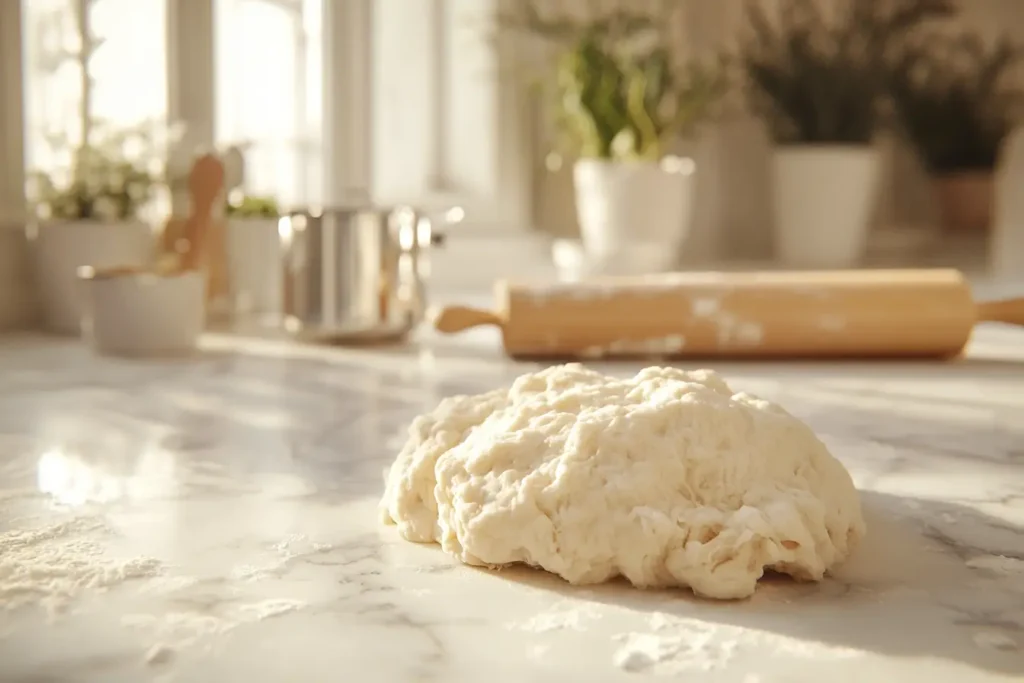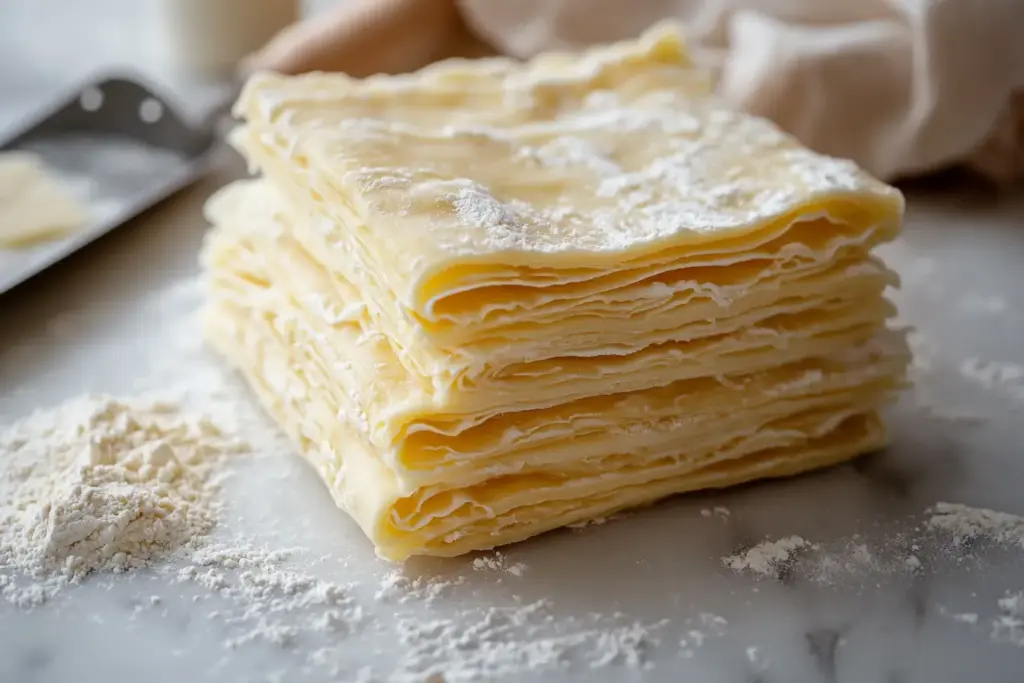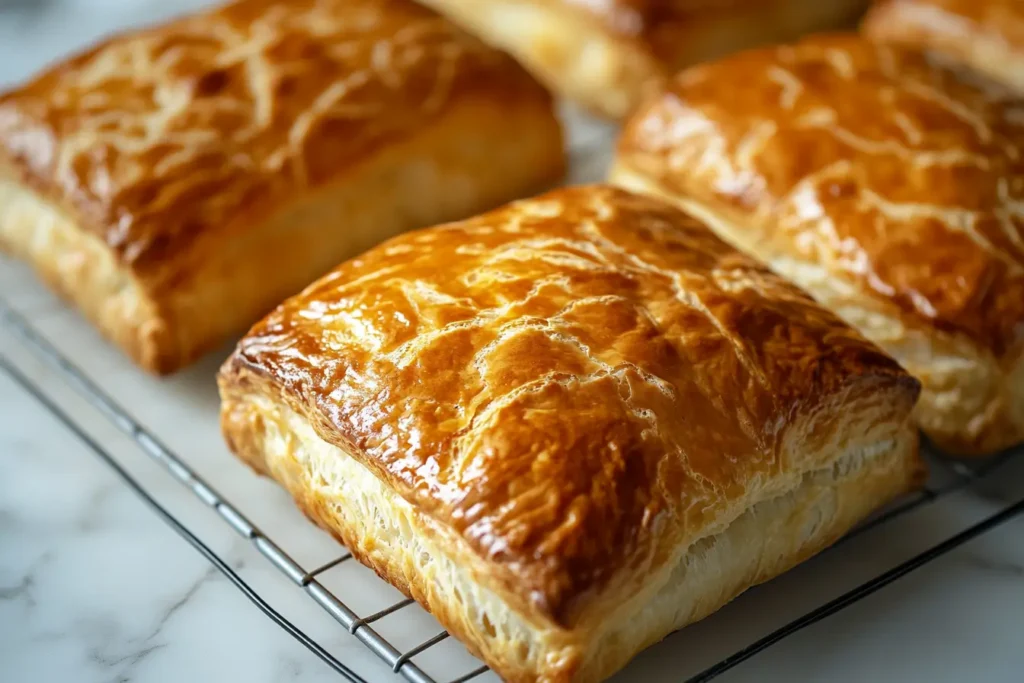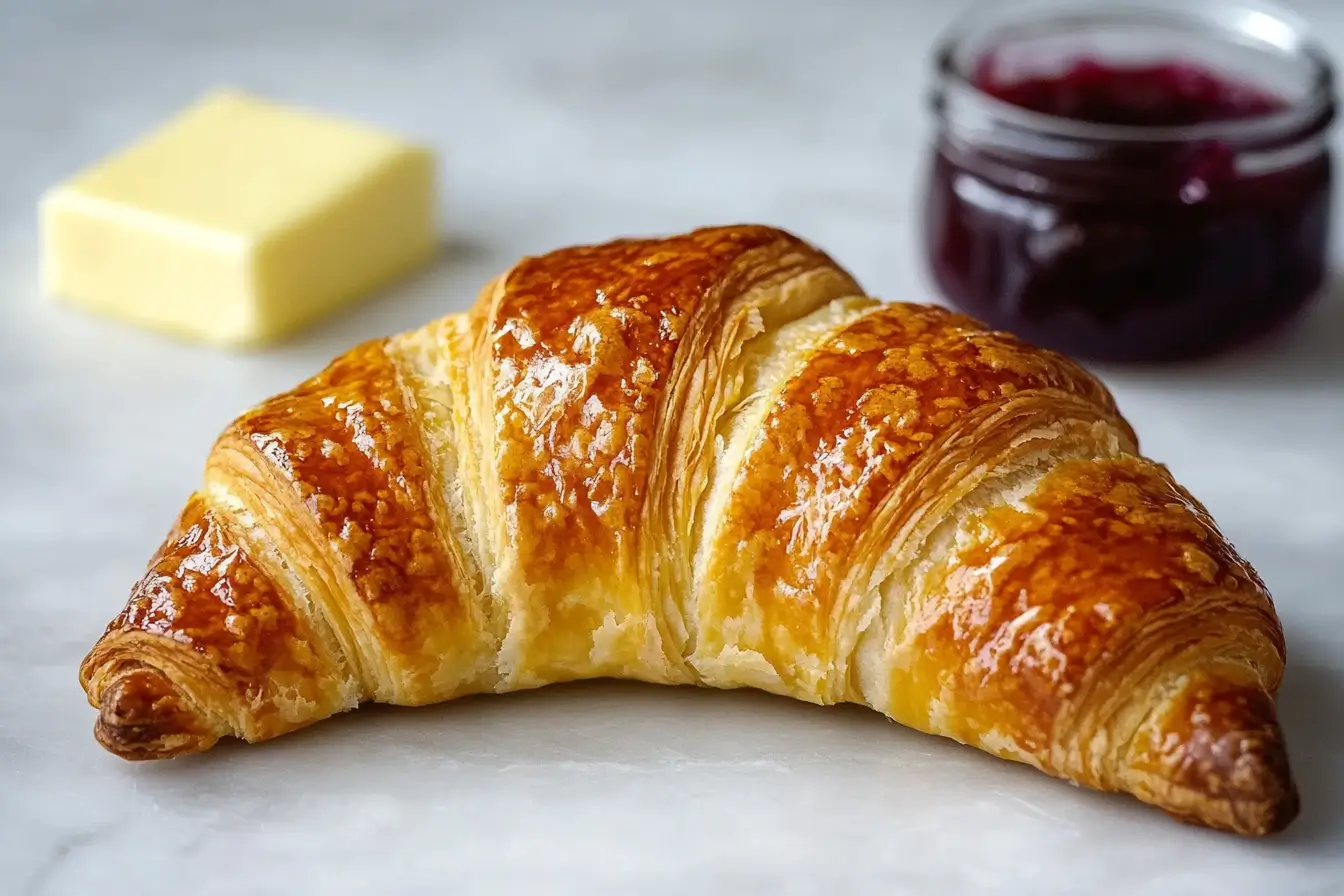Crafting the perfect Gipfeli is an art that bridges tradition and taste. This guide will teach you everything you need to know to master the gipfeli recipe, a quintessential Swiss pastry loved for its flaky texture and delicate crescent shape. From understanding its roots to creating your own buttery layers, this article covers all the steps, tips, and variations needed to make this delightful treat at home. Whether you’re a seasoned baker or a beginner, you’ll find practical advice and inspiration to bring authentic Swiss flavors to your table.
Introduction to Gipfeli
What is Gipfeli?
Gipfeli, a beloved Swiss pastry, is the perfect marriage of simplicity and elegance. Often likened to croissants, Gipfeli stands apart with its crisp exterior and distinctively lighter, less buttery profile. It’s a staple in Swiss bakeries and homes, enjoyed as a breakfast item or snack. Whether paired with butter, jam, or eaten plain, Gipfeli offers a delicate yet satisfying bite.
Unlike the croissant’s rich, buttery layers, Gipfeli embodies a subtler, more refined charm, making it versatile for both sweet and savory applications. Its dough incorporates just enough butter for flakiness without overwhelming the palate, while maintaining a slightly firmer texture.
Origins and History of Gipfeli Recipe
Tracing its origins back to Switzerland’s culinary traditions, Gipfeli reflects the region’s knack for creating wholesome, high-quality baked goods. The term “Gipfel” means “peak” in German, a nod to the pastry’s iconic crescent shape that resembles mountain peaks. Swiss bakers, inspired by French croissants and Italian cornettos, adapted the recipe to suit local tastes, reducing butter and sugar for a lighter finish.
Regional variations abound, with each canton putting its spin on the classic. Sweet versions, like Mandelgipfel (almond-filled), and savory ones, like Laugengipfel (pretzel-style), highlight the versatility of this humble pastry. Over time, Gipfeli has transcended borders, becoming a symbol of Swiss culinary craftsmanship.
Ingredients for Gipfeli
Key Ingredients for Authentic Gipfeli
To master a traditional gipfeli recipe, it’s essential to focus on quality ingredients. The foundation begins with all-purpose flour, which gives the dough structure and flexibility. Choose a European-style butter with at least 82% butterfat to ensure the flakiness of your layers. Active dry yeast helps the dough rise, creating the soft yet airy texture that Gipfeli is known for. Granulated sugar adds a hint of sweetness, while salt enhances the overall flavor balance.
Milk, preferably lukewarm, is used to activate the yeast, contributing to a smooth, enriched dough. Adding an egg not only binds the ingredients but also imparts richness and a golden hue to the baked pastry. These core ingredients work together to achieve the perfect texture and flavor for your gipfeli recipe.
Optional Additions and Variations
Though the classic Butter-Gipfeli is a delight on its own, creative fillings can elevate this pastry to new heights. For a sweet twist, incorporate fillings like chocolate or almond paste. Savory enthusiasts can opt for cheese or herb-infused fillings, which make a delightful accompaniment to soups or salads. The versatility of Gipfeli makes it a favorite for every palate.
Step-by-Step Guide to Making Gipfeli Recipe
Preparing the Dough

Creating the dough is the first and most crucial step in any gipfeli recipe. Start by mixing lukewarm milk with active dry yeast and letting it sit until frothy—this ensures the yeast is activated and ready to work its magic.
In a large mixing bowl, combine flour, sugar, and salt. Gradually pour the yeast mixture into the dry ingredients, adding an egg to bring the dough together. Knead until smooth and elastic, then let the dough rest and rise until it doubles in size.
Laminating the Dough

The hallmark of Gipfeli is its laminated layers. Begin by preparing a butter block, chilling it until firm but pliable. Roll out the dough into a rectangle, place the butter in the center, and fold the dough over to encase it. Chill for 30 minutes before rolling out the dough and folding it into thirds—a process you’ll repeat three times to create those iconic flaky layers. Remember, patience is key! Resting between folds keeps the butter cool and the layers distinct.
Shaping and Baking Gipfeli
After the final chill, divide the dough in half and roll it into a long rectangle. Cut it into triangles, ensuring each has a 5-inch base. Make a small cut at the base’s center, then roll the triangles tightly toward the tip, forming the classic crescent shape. Place them on a baking sheet, cover lightly, and let them rise again until puffy.
Brush the pastries with an egg wash for a glossy finish, then bake in a preheated oven at 400°F for five minutes. Reduce the temperature to 375°F and continue baking for 10–12 minutes, or until golden brown.

Serving and Enjoying Gipfeli Recipe
Classic Serving Suggestions for the Gipfeli Recipe
Freshly baked Gipfeli is a treat best enjoyed warm from the oven. Their crisp, golden crust pairs beautifully with a generous pat of butter and a dollop of homemade jam. For a classic Swiss breakfast, serve them alongside a steaming cup of coffee or tea. The light and flaky layers make them perfect for spreading soft cheeses or even dipping into a hot drink for added indulgence.
If you’re hosting a brunch, arrange your Gipfeli on a platter with an assortment of spreads like honey, fruit preserves, or nut butter. Their elegant crescent shape adds a touch of sophistication to any table setting, making them a versatile addition to any meal.
Nutritional Information for Gipfeli (Per 100g)
Below is a nutritional breakdown of the classic Gipfeli recipe. These values are approximate and may vary based on ingredients used:
| Nutrient | Amount (per 100g) |
|---|---|
| Calories | 350 kcal |
| Carbohydrates | 40 g |
| Protein | 7 g |
| Fats | 18 g |
| Saturated Fats | 11 g |
| Sugar | 5 g |
| Dietary Fiber | 2 g |
| Sodium | 200 mg |
Creative Pairings and Presentations
For a modern twist, try pairing your Gipfeli with savory options such as herbed cream cheese, smoked salmon, or a thin slice of avocado. Sweet lovers can drizzle melted chocolate or sprinkle powdered sugar over the pastries for a dessert-worthy treat.
Variations of Gipfeli
Sweet Variations
The versatility of the gipfeli recipe shines in its sweet adaptations. A favorite among many is the Nussgipfel, filled with a rich and nutty almond or hazelnut paste. For a more indulgent option, the Schoggi-Gipfeli incorporates chocolate fillings, often with chocolate-dipped ends for added decadence.
To add a fruity twist, consider a jam-filled version using apricot or berry preserves. These delightful options make Gipfeli not only a breakfast item but also a sweet snack for any time of day.
Savory Variations of the Gipfeli Recipe
For those with a preference for savory, the Laugengipfel offers a pretzel-like crust, achieved by dipping the dough in a baking soda solution before baking. Cheese-filled Gipfeli, featuring Swiss cheese or herbed cream cheese, make for a satisfying snack or appetizer.
Regional and Holiday-Specific Variations
Many Swiss regions have their unique spin on Gipfeli. During the holidays, you might find festive versions filled with spiced nuts or marzipan. These special editions highlight the adaptability of the classic recipe while celebrating local traditions.
Would you like to learn more about incorporating variations into your Gipfeli? Explore this guide to fillings for more inspiration. Keep experimenting to find the variation that best suits your taste!
Troubleshooting Common Issues
Challenges with Dough Preparation
Working with dough for a Gipfeli recipe can sometimes be challenging. If the dough feels too dry or crumbly, it likely needs a bit more moisture. Add milk gradually, a teaspoon at a time, until the dough becomes smooth and cohesive. For expert advice on handling dry dough issues, check out this guide on Serious Eats.
If the dough is overly sticky, lightly dust your hands and work surface with flour. Be cautious not to add too much, as this can lead to dense and heavy pastries.
Another common issue is activating the yeast. If your yeast mixture doesn’t foam after resting, it could be that the milk was too hot and killed the yeast. Make sure the milk is lukewarm—warm to the touch but not scalding—to ensure the yeast activates properly.
Baking Problems in the Gipfeli Recipe
Even with careful preparation, baking problems can occur. If your Gipfeli isn’t puffing up properly, it might be due to under-proofing. Allow the dough to rest in a warm, draft-free environment until it doubles in size. For pastries with dense layers, ensure your butter remains cold during the laminating process to maintain the flaky texture.
Additionally, uneven baking can result from improper oven temperatures. Use an oven thermometer to check that the heat is consistent, and rotate your baking tray midway through to ensure even browning.
With these tips, your Gipfeli will turn out beautifully every time. Troubleshooting these small hiccups ensures a more rewarding baking experience!
FAQ
What is the difference between a croissant and a Gipfeli?
While both pastries share a crescent shape, Gipfeli has a firmer texture and less buttery taste compared to croissants. The Swiss version also tends to have a slightly crispier crust, making it perfect for pairing with a variety of fillings.
What is a Mandelgipfel?
A Mandelgipfel is a delightful variation of the classic Gipfeli, filled with a sweet almond paste. It’s a favorite treat for those who love nutty flavors and a hint of sweetness in their pastries.
What is the Thunderbrew recipe?
The Thunderbrew recipe, a fictional drink in gaming culture, is a curious question for food lovers. While not a pastry, you can explore fun and creative drinks to pair with your Gipfeli.
For more details about variations or pairing ideas, consider diving into more recipes that suit your tastes. Whether you’re baking or exploring, Gipfeli recipes are a great place to start experimenting!
Conclusion and Final Tips
Recap of Essential Steps
Mastering a gipfeli recipe is both an art and a rewarding endeavor. The journey begins with preparing a soft, pliable dough enriched with milk and butter to ensure a smooth texture. Careful laminating follows, with layers of cold butter folded and rolled into the dough to create the signature flakiness of Gipfeli. After resting, shaping the dough into crescents completes the process before baking them to golden perfection.
Each step, while detailed, contributes to the final result: a pastry that’s light, flaky, and full of flavor. Proper attention to detail, like maintaining cold butter during lamination and allowing the dough to rise adequately, ensures that your Gipfeli will rival those found in Swiss bakeries.
Encouragement for Experimentation
Once you’ve mastered the basics, the possibilities with Gipfeli are virtually endless. Experimenting with fillings is a great way to personalize your pastries. For a sweet treat, consider adding fruit preserves, almond paste, or even chocolate. Savory variations, like cheese-filled crescents or herb-infused dough, can elevate your Gipfeli to a perfect accompaniment for soups, salads, or charcuterie boards.
Not only do variations offer a way to tailor the pastry to different tastes, but they also allow you to get creative with presentation. For example, sprinkling sesame seeds or coarse sugar over the egg wash before baking adds a decorative and flavorful twist. These small touches make your Gipfeli even more special, whether you’re serving them for breakfast, as a snack, or at a festive gathering.
Tips for Baking Success
Baking is as much about patience as it is about technique. Here are some tips to ensure your Gipfeli recipe turns out perfectly every time:
- Keep Ingredients Chilled: Always work with cold butter and refrigerate the dough between folds to maintain distinct layers.
- Use Quality Ingredients: High-quality flour, butter, and milk make a noticeable difference in the taste and texture of your pastries.
- Be Gentle with the Dough: Overworking the dough can develop too much gluten, making the pastries tough rather than tender.
- Monitor Oven Temperature: Uneven heat can ruin delicate pastries. Use an oven thermometer to ensure consistent baking.
Final Thoughts
Baking Gipfeli is more than just a culinary activity—it’s a way to connect with Swiss traditions and explore your creativity in the kitchen. With a little practice, even novice bakers can achieve professional results. Plus, the satisfaction of pulling a tray of perfectly golden, crescent-shaped pastries from your oven is unparalleled.
Ready to level up your baking skills? Keep exploring new recipes and techniques to broaden your horizons. Whether you stick to classic flavors or dive into bold variations, making Gipfeli will undoubtedly become one of your favorite baking traditions. Share your creations with loved ones—they’re sure to ask for the recipe!

